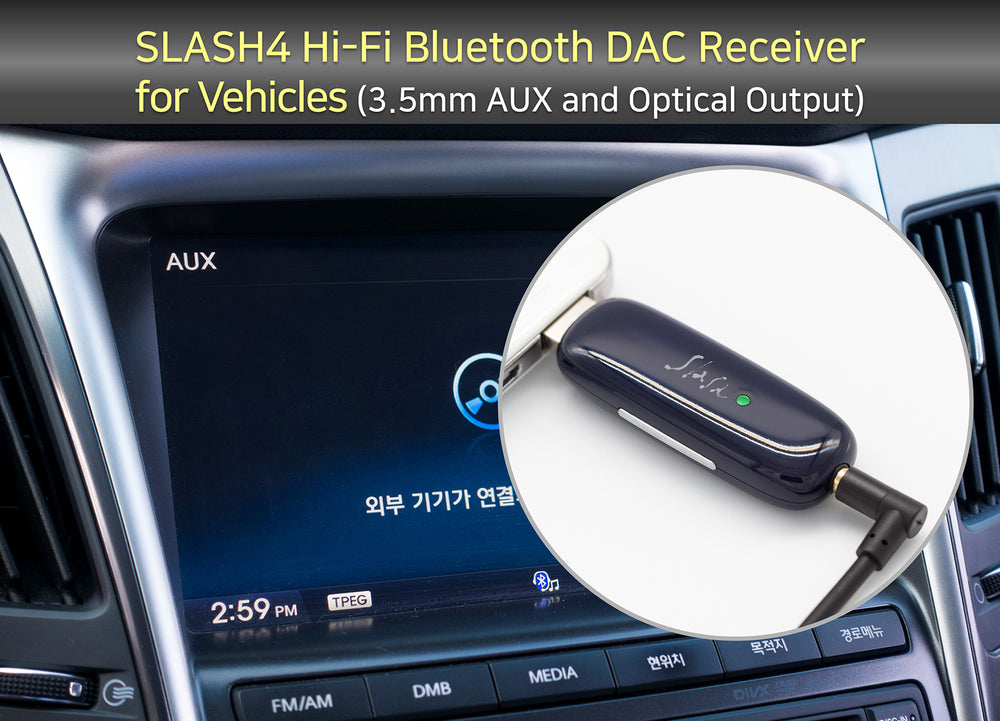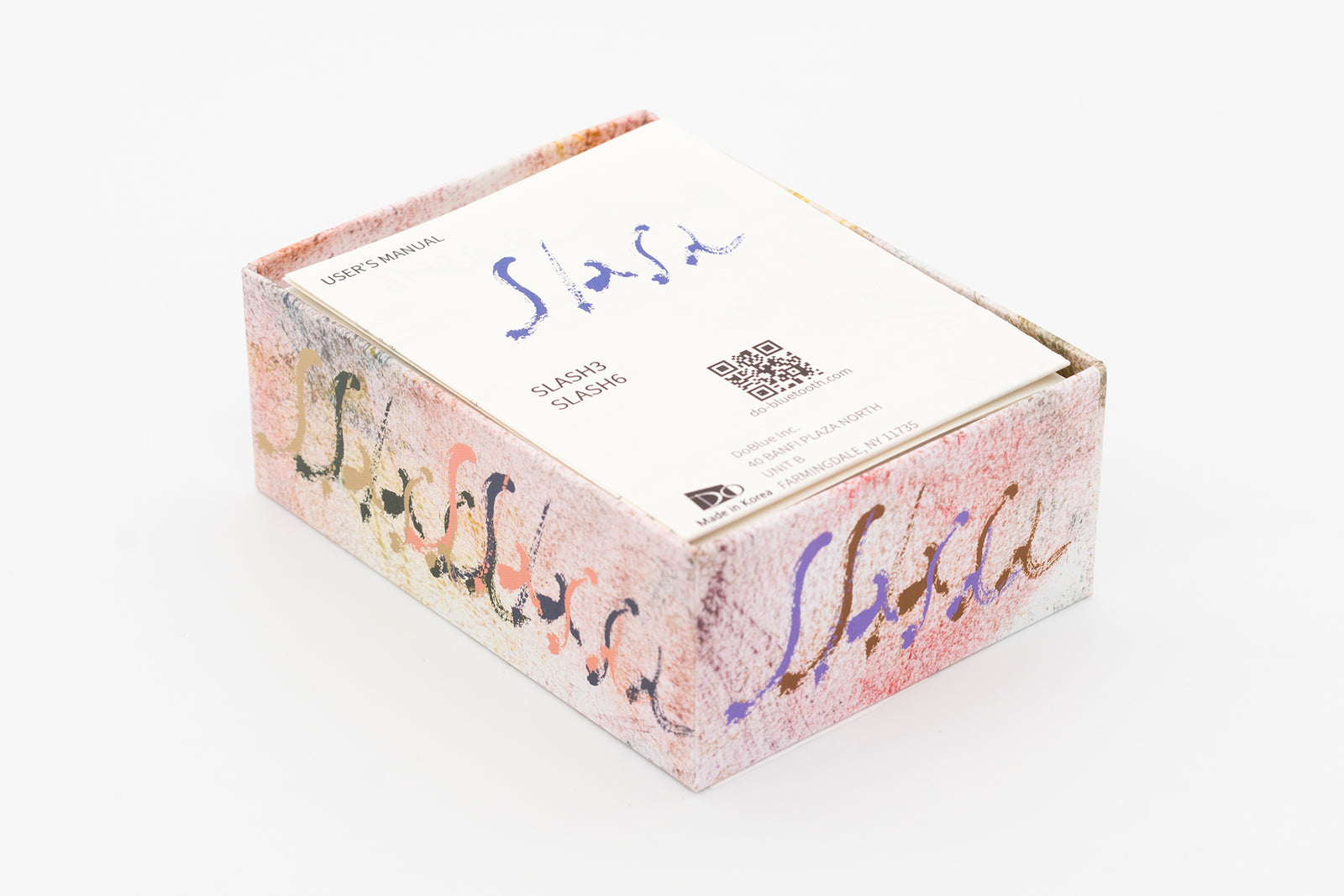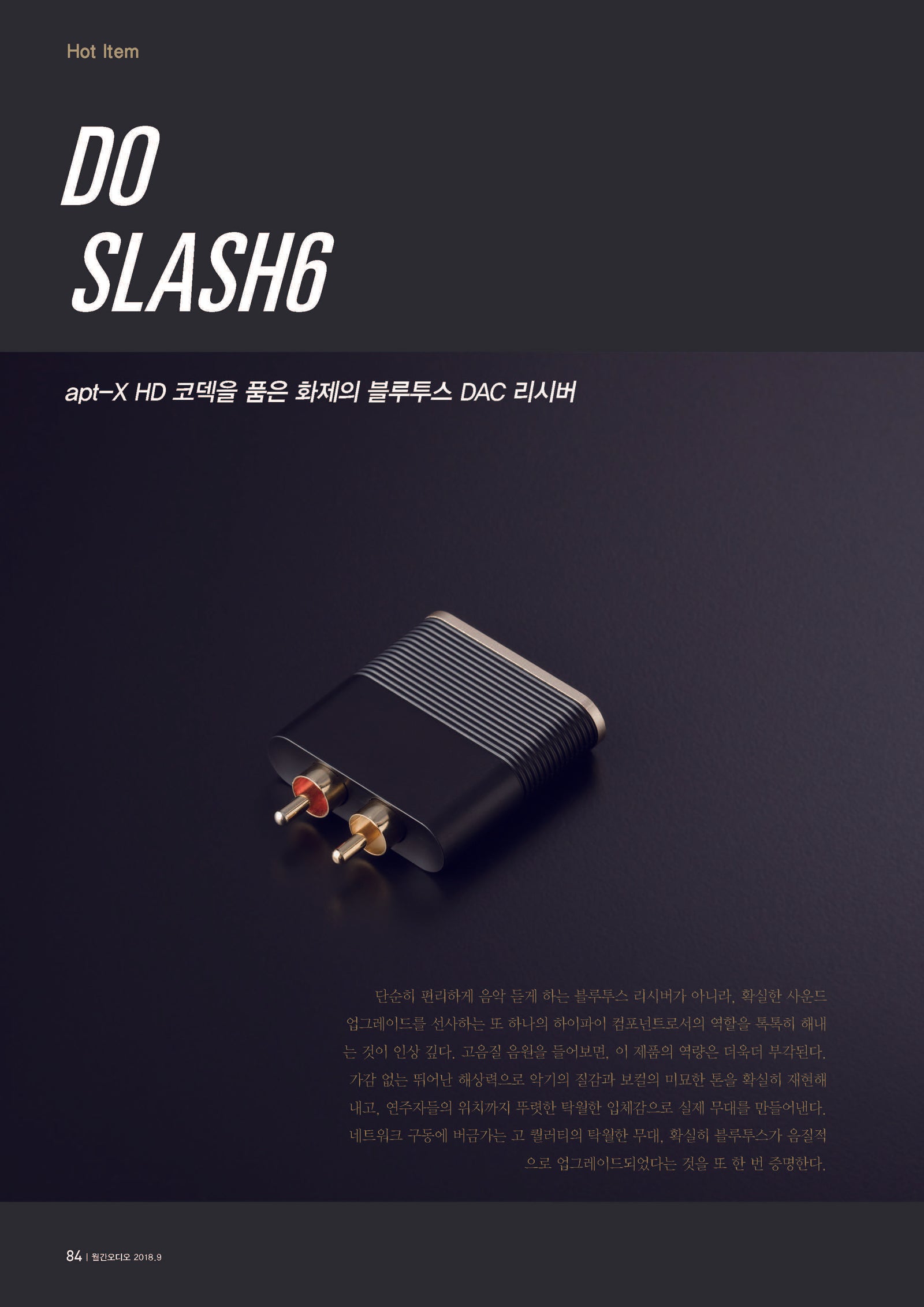Newly Released Do Blue SLASH4 - Hi-Fi Bluetooth DAC Receiver for Car Audio

Introduction
Do Blue, known for selling high-quality Bluetooth DAC receivers ‘SLASH series’ with a compact and innovative design, has now introduced a new model called SLASH4. This model is specifically designed for users who want to enjoy music with better sound quality through high-quality wireless audio codecs in their cars. Focusing on essential features, DO Blue has condensed the size and components to a minimum in the SLASH4, providing a compact and efficient solution for an enhanced in-car audio experience.
I have been using and enjoying both the first and second generations of the Do Blue SLASH6, so I am curious and excited about how well they have improved the new Do Blue SLASH4.
I also equipped my car with a full-option car audio system when purchasing it. However, I was disappointed because it only supports the basic codec for Bluetooth, and the playback through USB memory does not properly support high-quality audio files.
The Do Blue SLASH series offers a variety of features depending on the model, ranging from products with only a built-in Bluetooth receiver function to those with USB DAC, optical input and output, and even an integrated headphone amplifier. One consistent feature across all models is the unique design where you can simply plug it into the RCA jacks. Additionally, they all support high-quality Bluetooth audio codecs and are equipped with high-quality DACs.
When connecting existing SLASH products to a car audio system, there are some inconveniences, such as the need to remove the car audio amp module and perform modifications or, if not integrated into the main unit, the need to find a suitable place to mount it. Additionally, in the case of lower-end models, there may be difficulty in filtering out noise from the car's power supply, requiring the addition of a separate noise filter.
Exterior and Main Features












▶ This image shows the key features of the Do Blue SLASH4 Bluetooth DAC receiver.
▶ SLASH4 Key Features (image source: captured from product introduction page)
User Experience

▶ Here's how to enter pairing mode:

▶ The Bluetooth device is recognized as ‘SLASH4’





▶ The output signal exhibits almost a flat frequency response
While mentioned in my SLASH6 user experience, I'll reiterate this point as it is crucial for better understanding.
* Here, I want to clarify a couple of points:
1) The lack of reproducibility of the ultra-high frequency range is not the limit of SLASH6, but the limit of the Bluetooth codec.
2) This characteristic does not cause any noticeable problems in listening, and it is a very reasonable choice in an engineering manner.
The reason for transmitting the signal in this manner is that if you have to sacrifice some data within the limited wireless transmission bandwidth, we can find it more rational to sacrifice the ultra-high frequency range that is difficult to perceive with the human ear.
Between 16kHz and 20kHz, there's about 4kHz band of audio signal, but it carries an entirely different level of information compared to the 4kHz in the lower frequency range in terms of perceptual audio.
For example, 16 kHz and 20 kHz are less than half an octave difference, but 20 Hz to 4 kHz has a range of sound that exceeds 7 octaves (just under 8 octaves). In addition, it belongs to the audible band that people can hear very well.
So, which range of 4 kHz band would you choose to stream more fully packed?
No matter who makes the decision, after pondering upon the above facts (even if you actually check them with your ears), it would be a much wiser decision to abandon a band above 16 kHz and transmit lower band signals more faithfully (fully packed).
And I'm a middle-aged person who can't defy biological aging, so I can't hear the frequency range above 16 kHz anyway.
Therefore, from my perspective, there is no issue with the loss in frequencies above 16 kHz, and, if anything, it would be preferable for the lower frequency range to be reproduced more faithfully.
Delivering excellent sound quality with the benefits of high-quality wireless audio codecs
Due to the high-quality wireless audio codecs with 24-bit high resolution, when I listen to the music played with my ears, the difference compared to the original file is minimal.
It provides quite dynamic and high-resolution sound that is challenging to distinguish from the original.
Of course, even with high-quality codecs, due to the characteristics of using lossy compression Bluetooth audio codecs with a bandwidth limited to within 1Mbps, as discussed earlier, there is a drop in reproduction capability in the super high-frequency range. Therefore, individuals with excellent hearing, capable of discerning sounds above 16kHz, may notice this difference.
Furthermore, since the predominant frequency ranges of vocals and various instruments mostly exist within the range below 10kHz, in typical music listening scenes, it can be considered challenging to perceive the difference clearly with the ears.

▶ Sample sound directly recorded from the playback output of Do Blue SLASH4
The video below is edited with audio files recorded from the output of the Do Blue SLASH4 Bluetooth receiver, connected via high-quality wireless audio codecs. Various pieces of music are played briefly during the video.
Honestly speaking, it provides such good sound quality that if you match the signal levels between the original and the recorded output, the difference is almost imperceptible.
In the video below, there is actually some degradation in audio quality during the process of conversion to video and uploading to the blog system. Therefore, please note that the sound you hear in the video may be slightly less accurate compared to playing the recorded sound file directly. Please keep this in mind while watching the video.
So, I can say that how it sounds in your car audio will now depend on the level of your car audio amp and speaker system.
▶ Optical output allowing the high-quality signal to be transmitted directly to advanced car audio systems
Do Blue SLASH4 also outputs optical signals simultaneously through the 3.5mm jack.
So, it's also a significant advantage that you can connect it to some high-end car audio systems with optical input using an optical cable. This allows the direct transmission of high-quality audio signals, encoded and decoded using high-quality Bluetooth audio codecs.

■ Trying SLASH4 with my car audio


▶ Simple connection and ease of use





▶ The audio latency is minimal., ensuring good lip sync during video playback as well.
The use of a chipset supporting aptX Adaptive and aptX LL codecs ensures minimal audio latency.
When watching videos on YouTube, the synchronization is well-maintained, and there is no noticeable audio delay, providing a satisfying video experience.
■ To use wired earphones or headphones with SLASH4
The output terminal is a 3.5mm earphone terminal, so can't we just plug earphones or headphones directly into SLASH4?
The fundamental idea behind the new SLASH4 is that it's designed as a Bluetooth receiver for vehicles. But, you can also use it with wired headphones or earphones that don't support wireless connections.
Of course, the device itself is quite small, but it's not the type with a built-in battery. If you want to use it on the go, you'll need to connect it to an external power source like a power bank(portable USB battery). However, considering it adds high-quality Bluetooth functionality to your favorite wired headphones, it seems like a pretty good combination.
(It would be perfect to have a small finger-sized external battery and a 'ㄷ'-shaped USB-A jack extension.)

However, since SLASH4's output is not very powerful, using earphones should be fine, but for headphones, you may need to connect models with higher sensitivity to achieve better sound quality.
When connected to a DAP with LDAC, and enjoying high-quality lossless music, the fidelity of the sound is noticeably excellent.
Because the tonal balance is very flat and there is no additional filtering or coloring, depending on the earphones (headphones) you use, it might sound somewhat dry.

A concluding remark
: SLASH4 provides excellent sound quality with high-quality Bluetooth audio codecs, and it's small and convenient.






